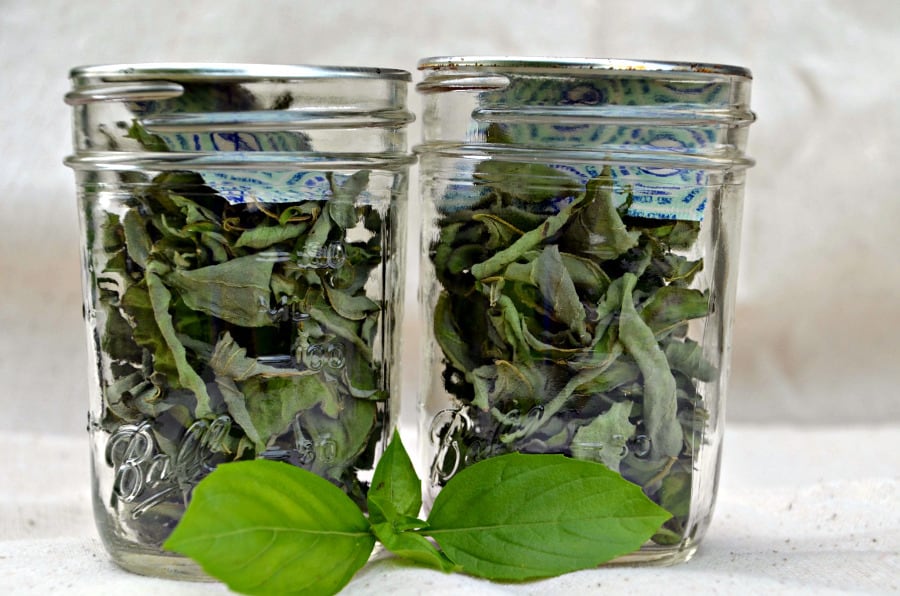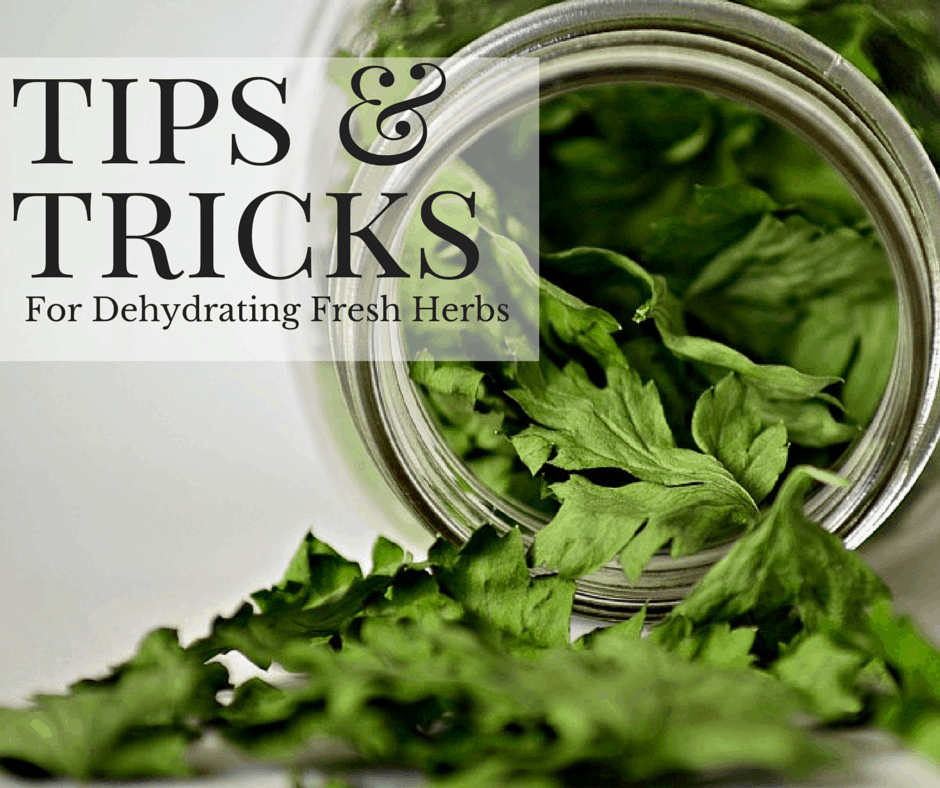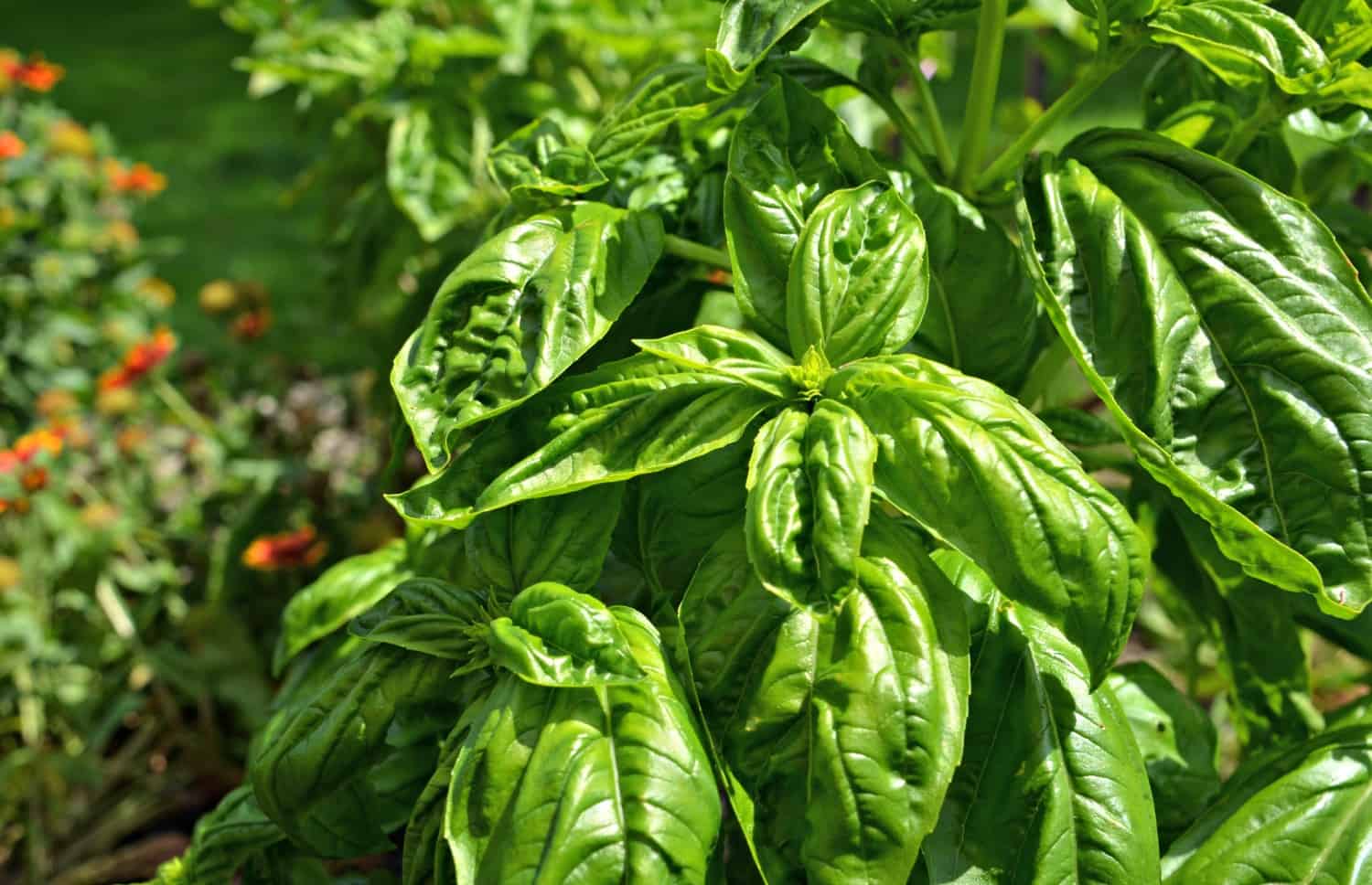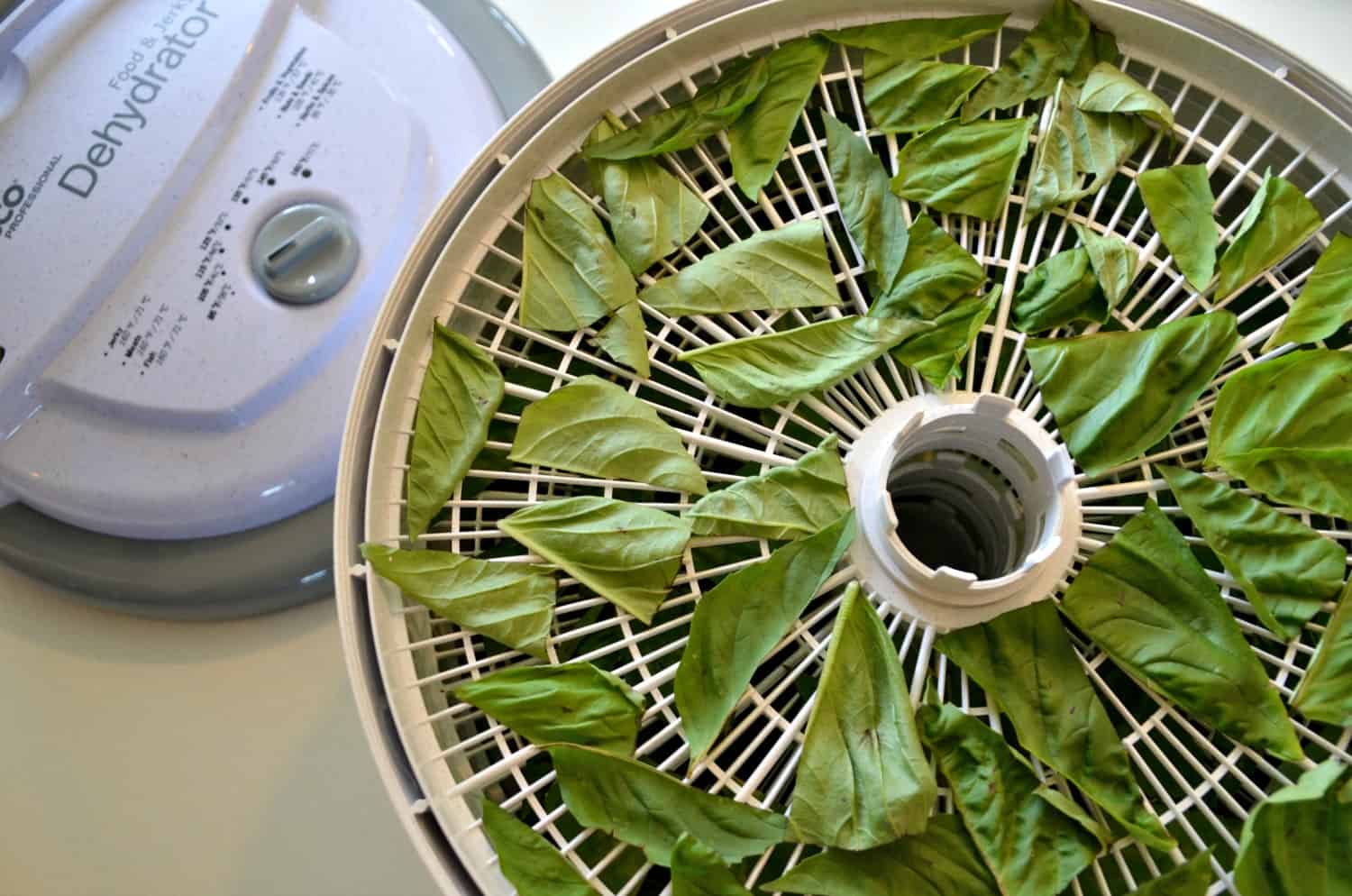Dehydrating Fresh Herbs was one of the first food storage methods I really jumped into, and I found I really enjoyed it. Growing herbs is remarkably easy, and with just a little planning you can not only to enjoy them fresh but also preserve them for use later in the year, long after the frost has killed off the plant. Many herbs are prolific enough to that a single plant can easily provide a year worth of herbs when preserved. Drying is the ideal preservation method for herbs, when done correctly the herbs maintain the flavorful oils and remain potent for 6-12 months, and the fully dried herbs resist spoiling because of bacteria, mold, and yeast growth.
Choosing Herbs to Dry
Some of the best herbs to dry are the strongly flavored ones, such as basil, sage, mint, thyme, oregano, and rosemary. Dried parsley is also a good herb to dry, even though it is mild in flavor, it is useful to add color to dishes. Cilantro is best used fresh, it loses all flavor when dried and is not worth the effort to dehydrate.
Some tips on harvesting herbs for drying:
- You can begin to harvest herbs when the plant has enough foliage to maintain growth. Up to 75% of the current season’s growth can be harvested at one time.
- Harvest early in the morning, after the dew dries, but before the heat of the day,
- Harvest herbs before flowering, otherwise, leaf production declines. Some herbs flavor diminishes once flowering has begun, this is particularly true of chives.
- Annual herbs can be harvested right up until a frost.
- Perennial herbs can be clipped until late August. Stop harvesting about one month before the frost date to allow the plant to harden-off before winter.
- Wash herbs, with the leaves on the stems, lightly in cold running water or in a large bowl of cold water, gently swirl the herbs in the bowl to remove any soil, dust, bugs, or other foreign material.
- Run the rinsed herbs through a salad spinner or blot with dry with paper towel. Then lay the leaves on a paper towel or flour sack towels, in a single layer without allowing leaves to overlap. Cover with another towel and another layer of leaves, to absorb any water in the creases of the leaves.
Equipment needed
While you don’t necessarily need any special equipment for drying, particularly if you will be air drying your herbs there are a few tools that make it easier and will provide optimum storage conditions.
- Paper Towels or Flour Sack Towels
(good because they are lintless)
- Brown paper lunch sacks for air-drying
- Storage bottles
- Jar Vacuum sealer, and accessory hose
for use with FoodSaver
- Oxygen Absorbers
Air-Drying
Air-drying is the least expensive dehydrating method, and also takes the longest. Air-drying works best for low-moisture herbs like marjoram, oregano, rosemary, and dill.
When harvesting herbs for air-drying gather the herbs singly and tie several stems together with string or an elastic band. Remember that fleshy stems will shrink as they dry, so an elastic tie is better for these herbs. Put the bundle of herbs, stem-side up, in a paper bag. Tie the end of the bag closed, being sure not to crush the herbs as you do, and poke a few holes in the bag for ventilation. Hang the bag by the stem end in a warm and dry place that has some natural ventilation.
When the herbs are crispy dry and crumble easily between the fingers, they are ready to be packaged and stored. Dried leaves may be left whole and crumbled as used, or coarsely crumbled before storage.
Dehydrating With a Dehydrator
Using a dehydrator is my favorite way to dry herbs! A few years ago I bought a mid-priced dehydrator and have been very happy with its performance. My Nesco Snackmaster Pro Food Dehydrator FD-75A runs like a champ, is a reasonable size, and there are tons of accessories available for it.
I have found the time to dehydrate herbs in my Nesco dehydrator varies and herbs can take anywhere from 12-24 hours to dry. A ton of factors affect the drying time of herbs and range from atmospheric humidity to the moisture content of the herb, but the dehydrator controls air circulation and temperature, yielding high-quality herbs in a relatively short period of time.
When the herbs are crispy dry and crumble easily between the fingers, they are ready to be packaged and stored. Dried leaves may be left whole and crumbled as used, or coarsely crumbled before storage.
Oven and Microwave Drying
While I have heard herbs can be successfully dried in the oven I have never had luck with this method. Ovens even on the lowest setting tend to cook the herbs.
I have never tried drying herbs in the microwave, but will give it a go this summer and report back!
Storing Dried Herbs and Spices
Pack dried herbs in an airtight container. I like glass, and Ball jars work great for this, but there are all sorts of jars that will work.

If I know I will not be using my dried herbs right away I seal the jars up with a Foodsaver attachment that vacuum seals glass jars with dry contents in it. The FoodSaver Jar Sealers come in wide mouth and regular mason jar sizes, and is for use with any FoodSaver
machine that has an accessory port. I also like to add Oxygen Absorbers
to jars that are being sealed up for longer storage. These food-safe packets contain an iron powder that absorbs oxygen and moisture, they are made of a material that allows oxygen and moisture to enter while keeping the iron powder contained.
Store dried herbs in a cool, dry place away from light.
Check out these posts on drying Fresh Basil and Parsley:
Got any tips or tricks on drying herbs? Share them in the comments



